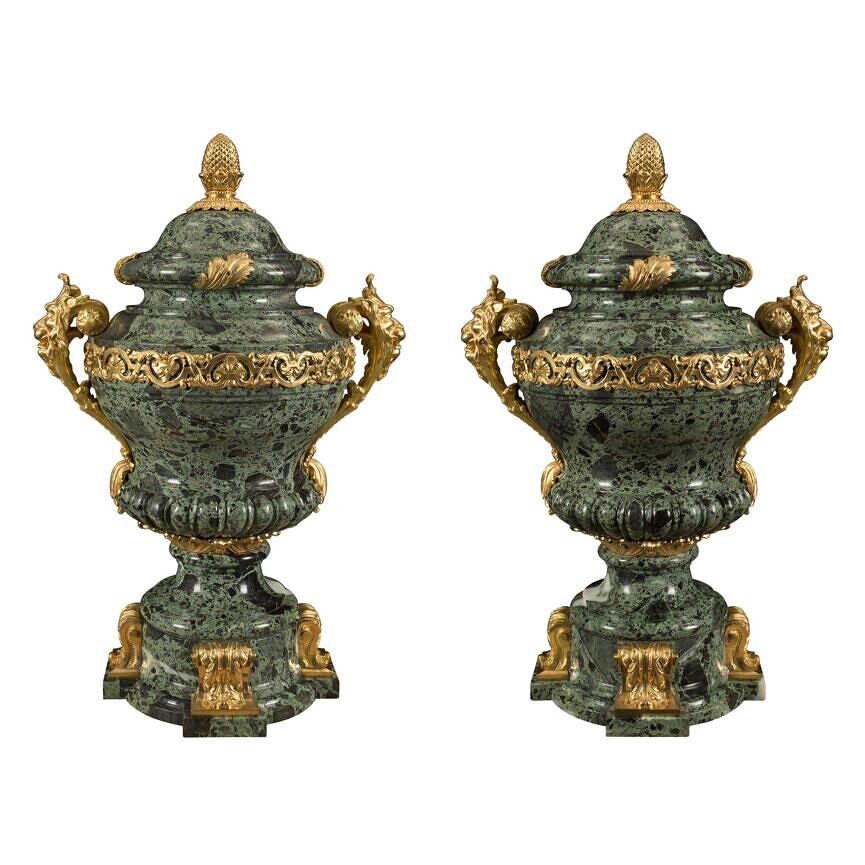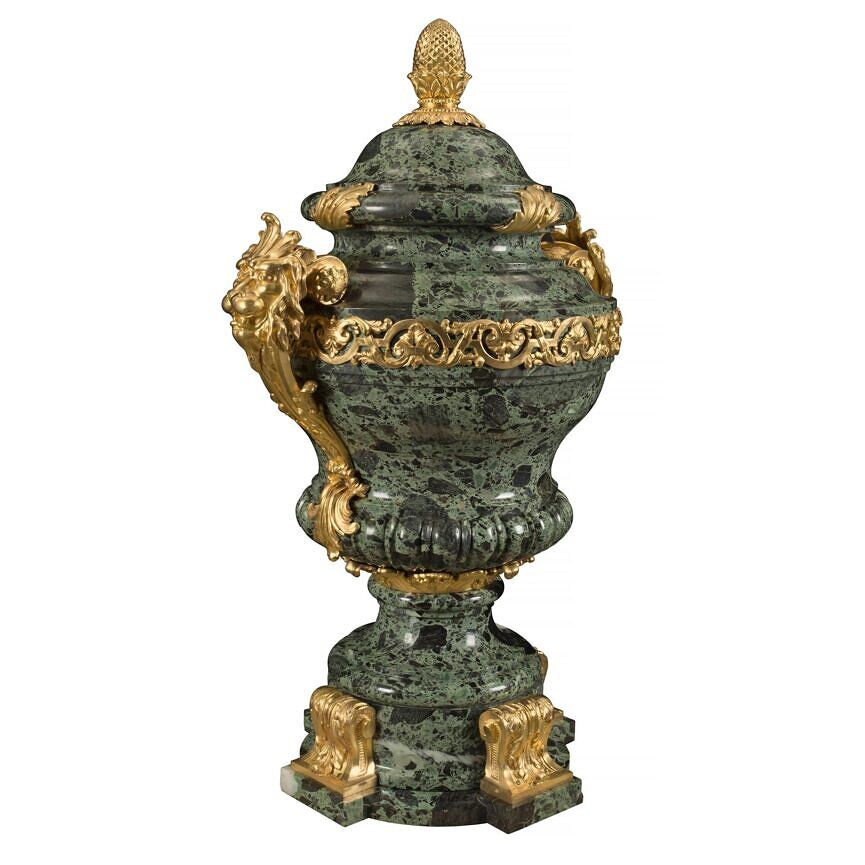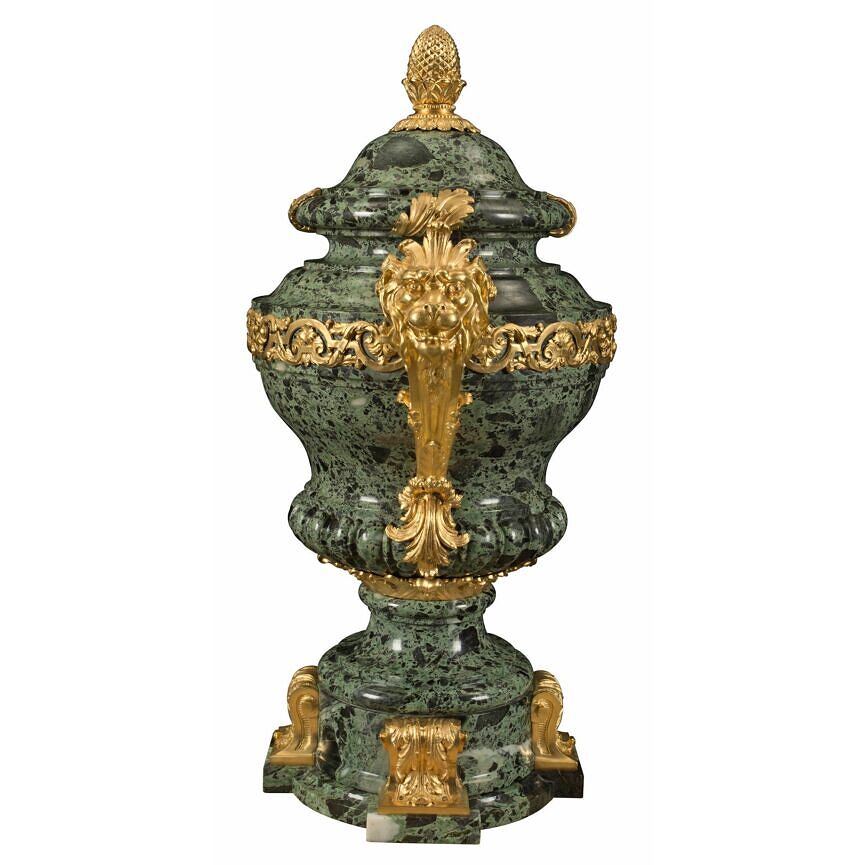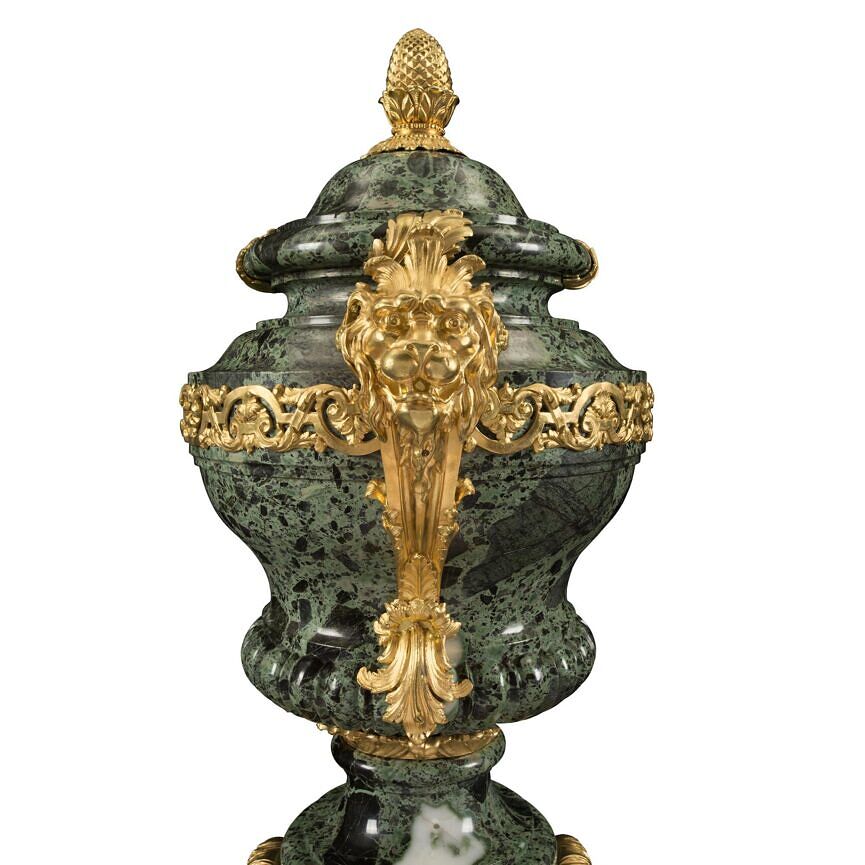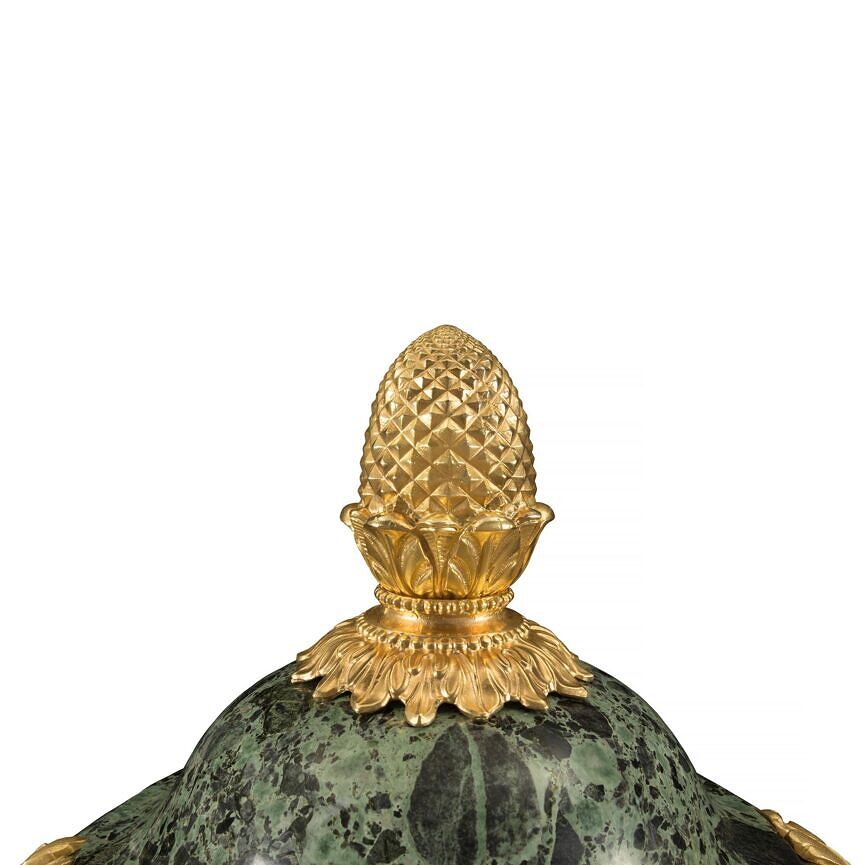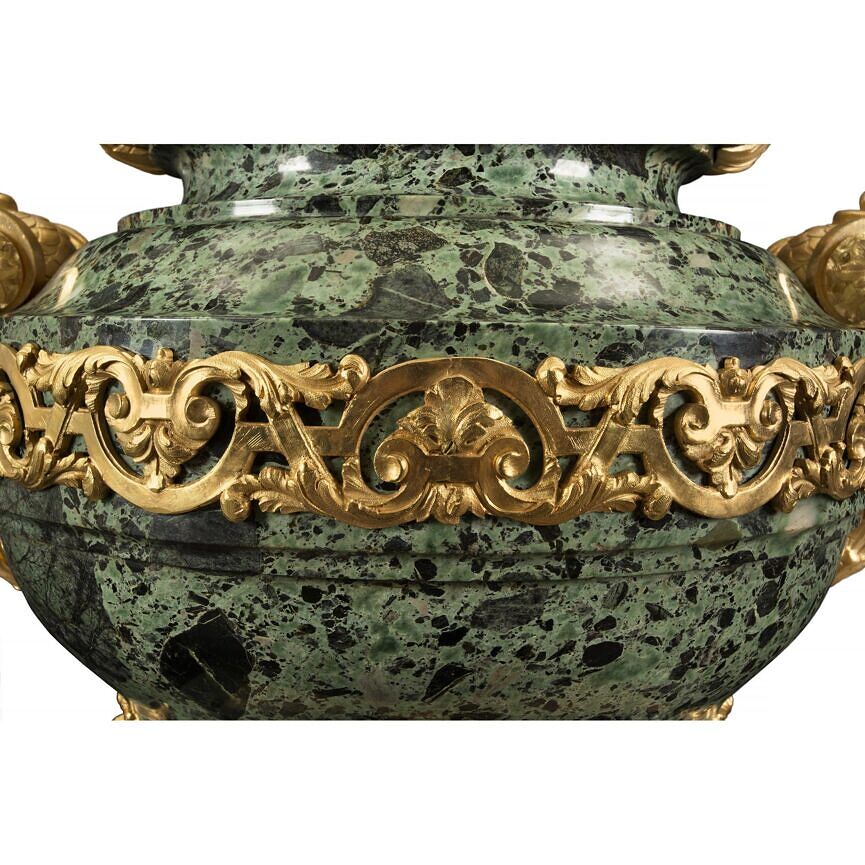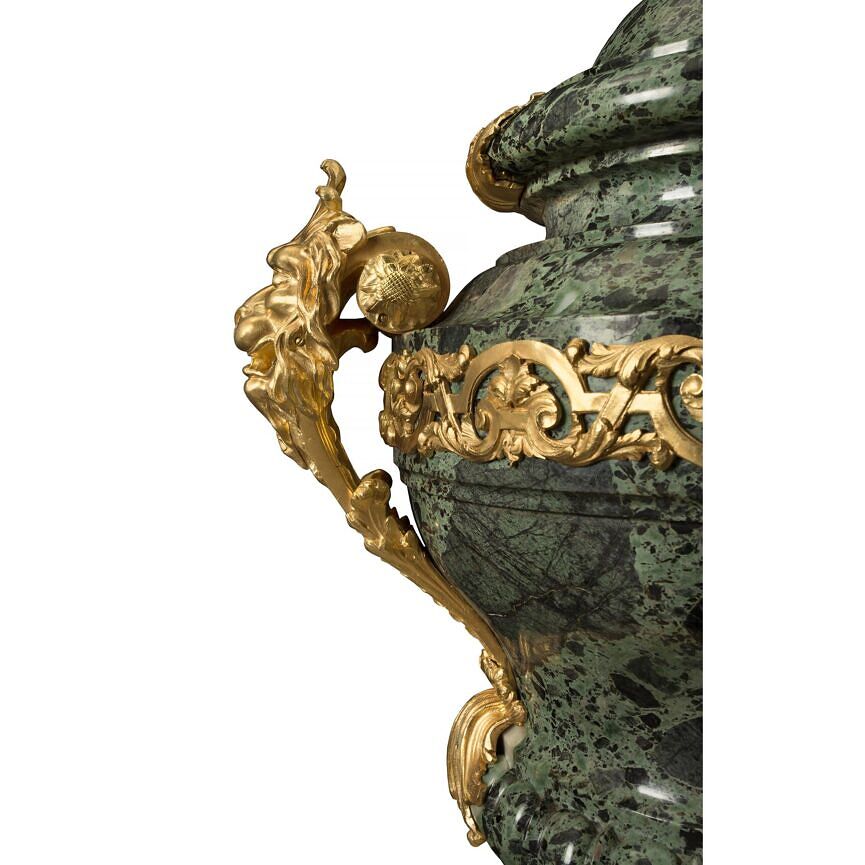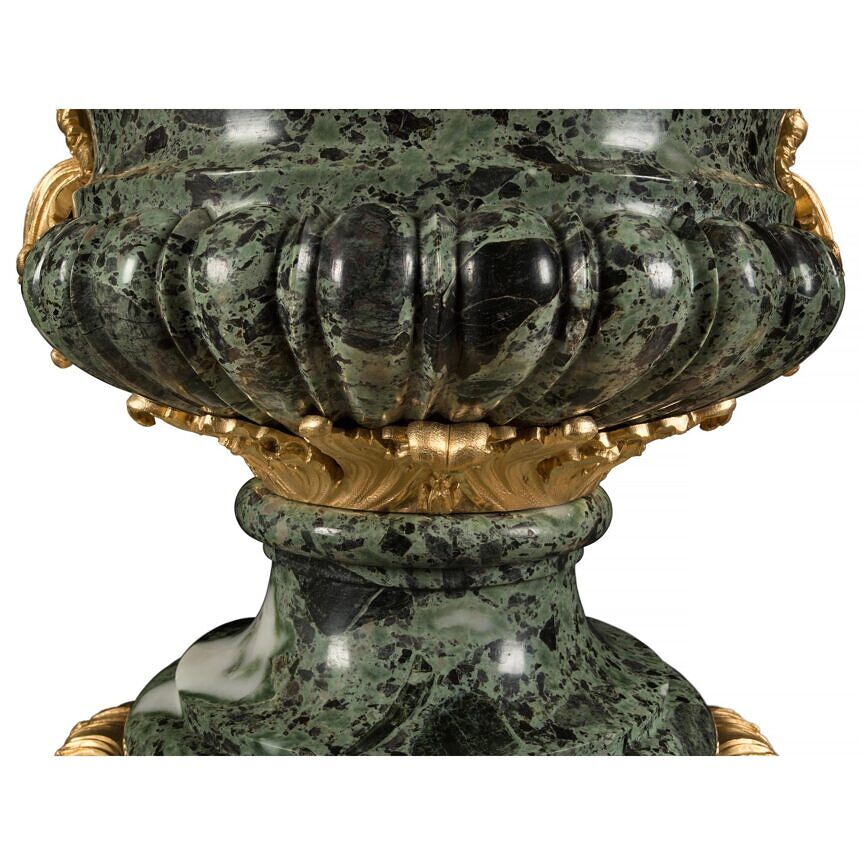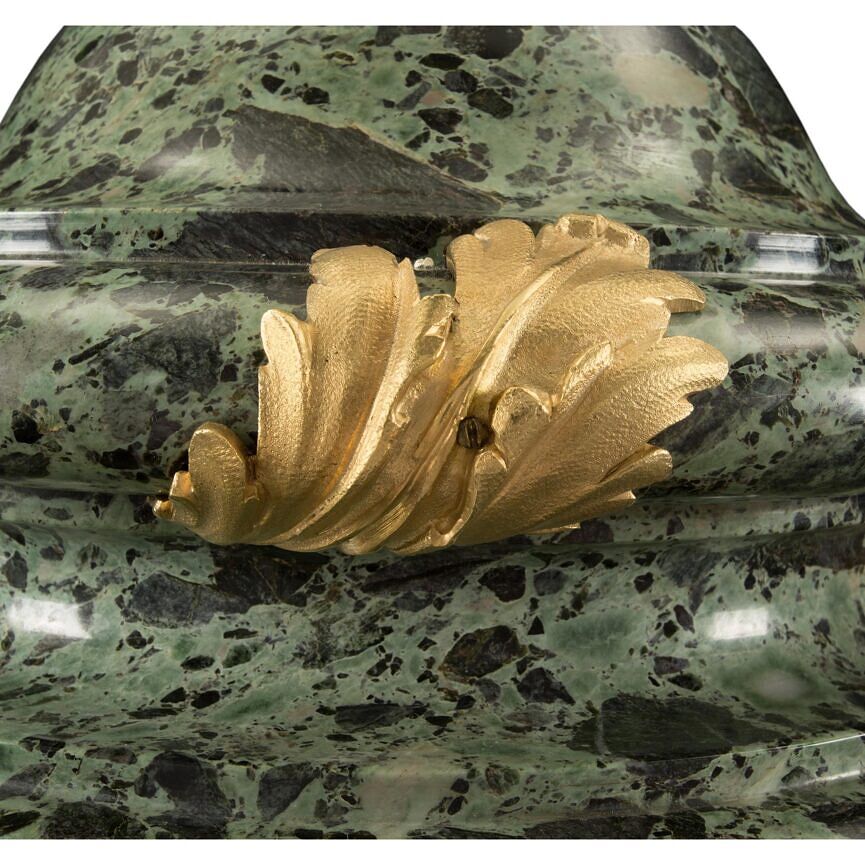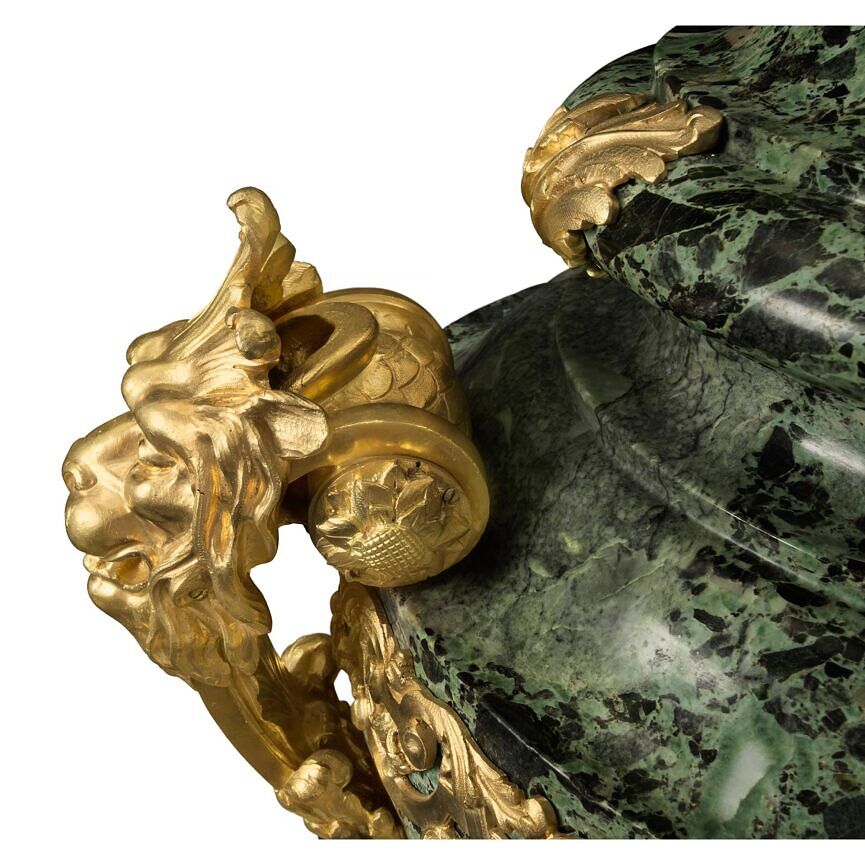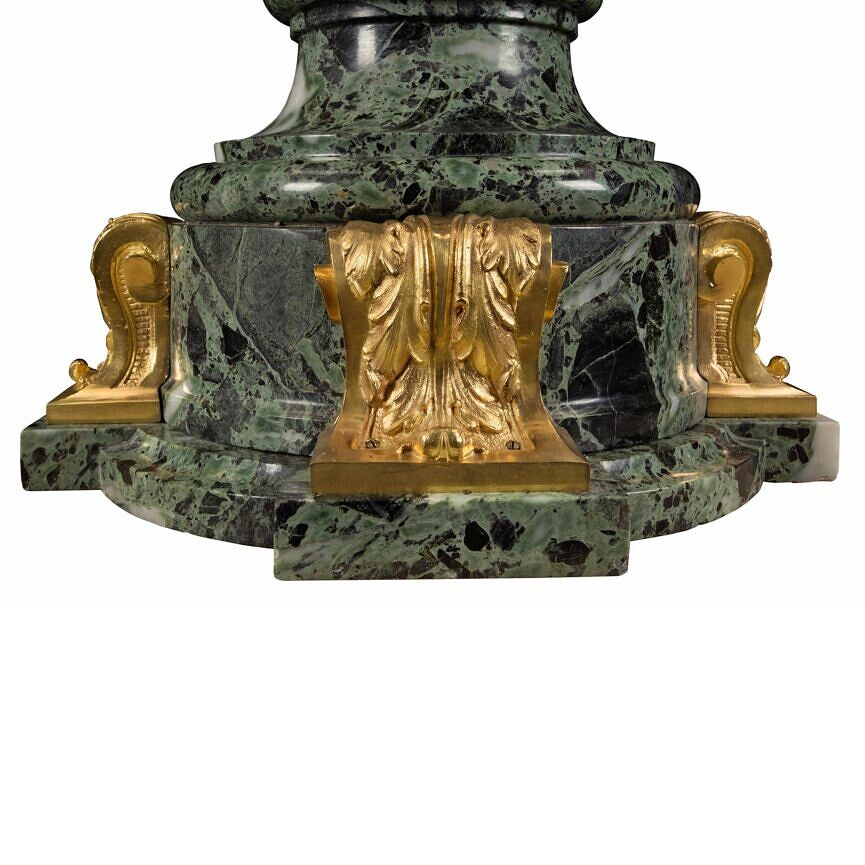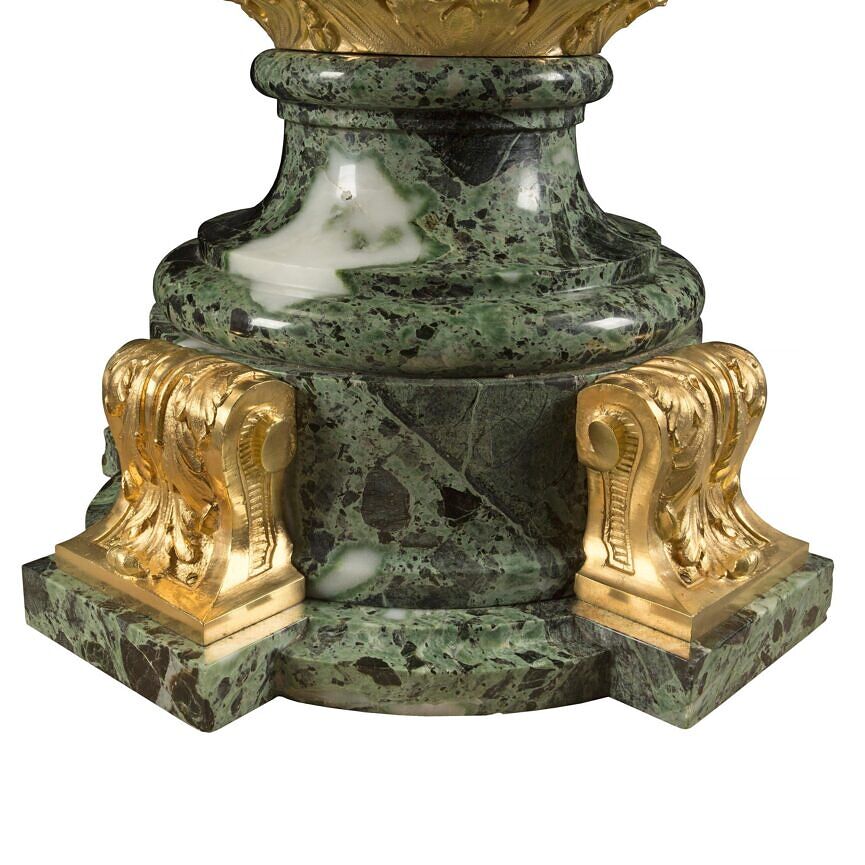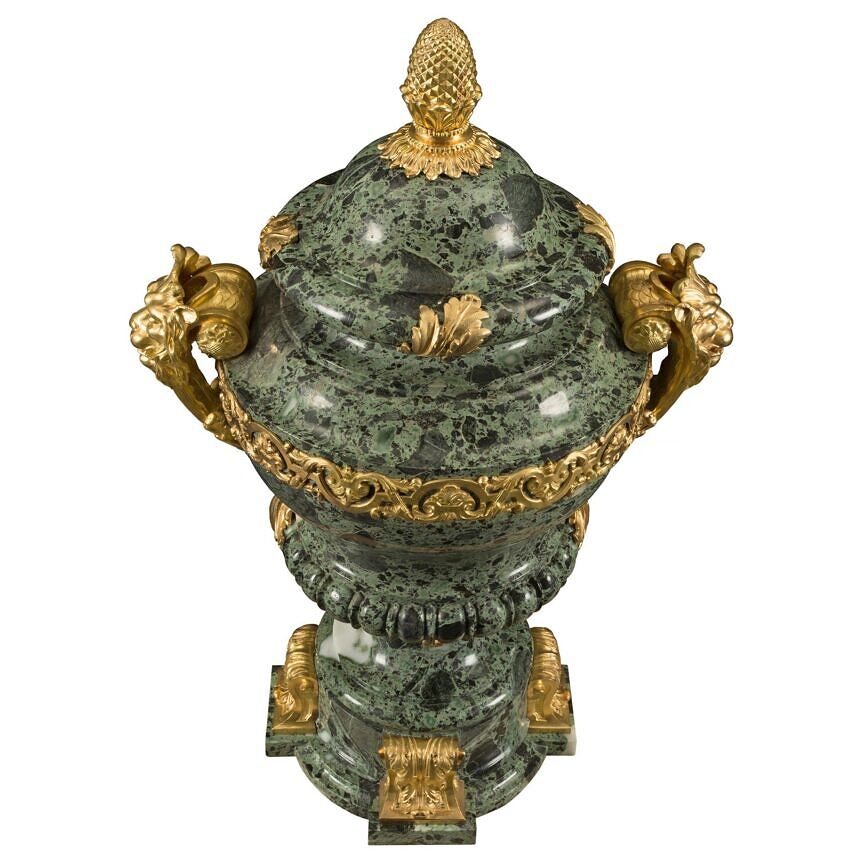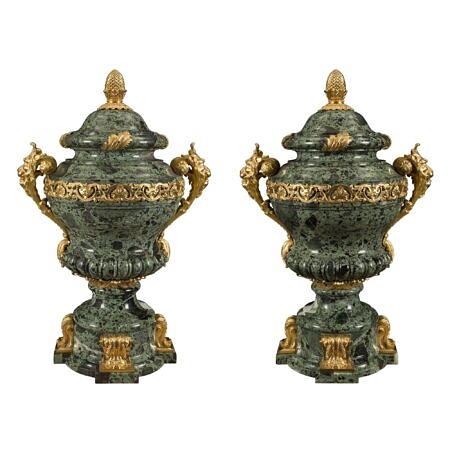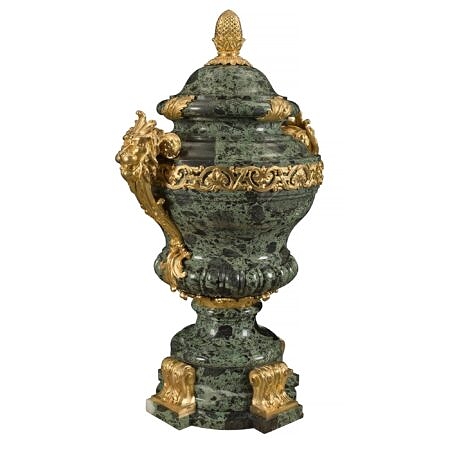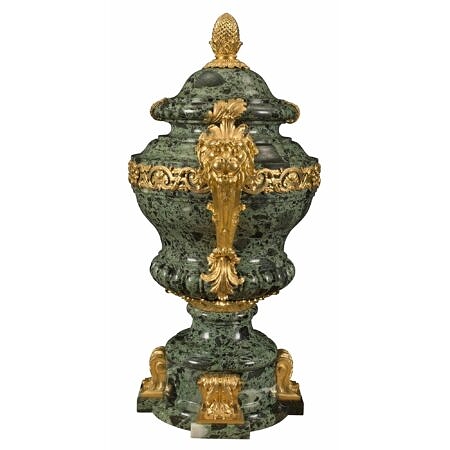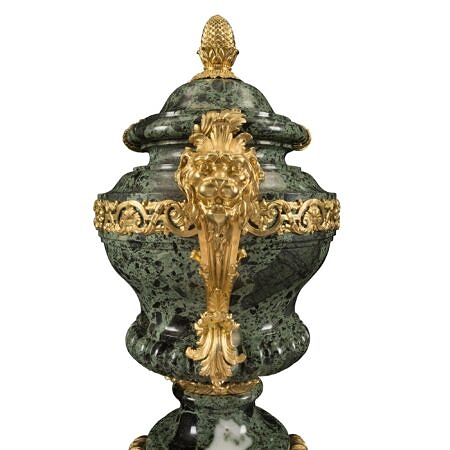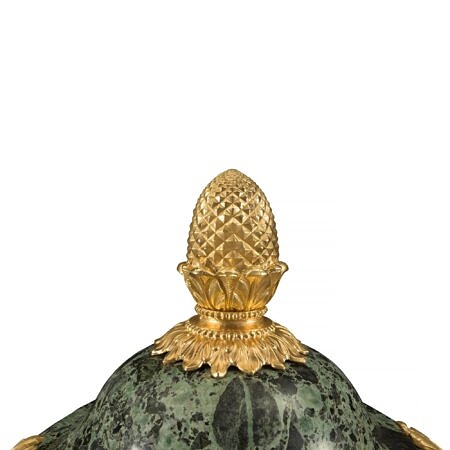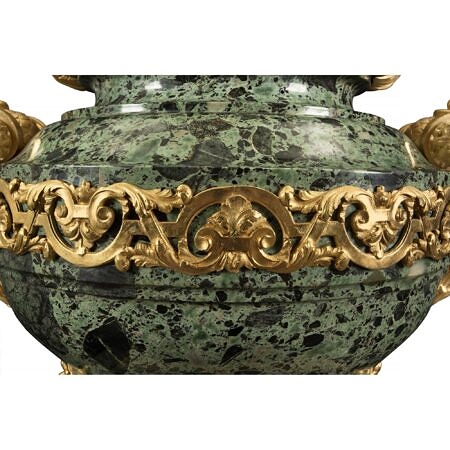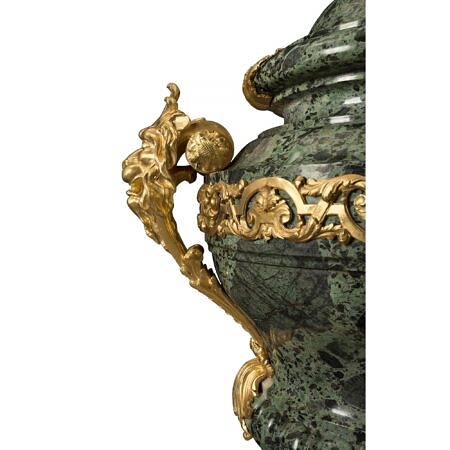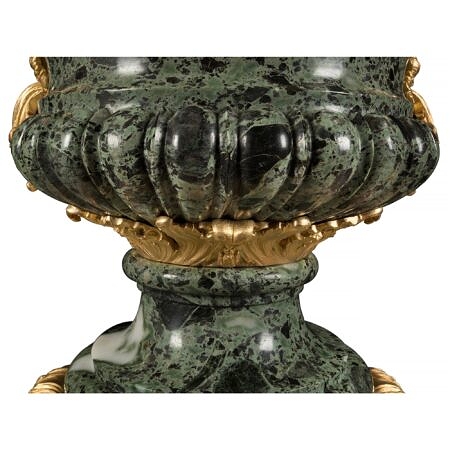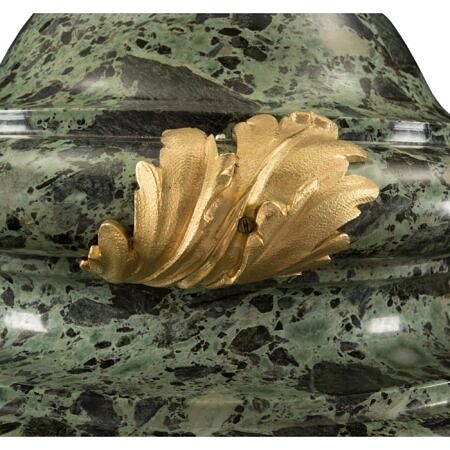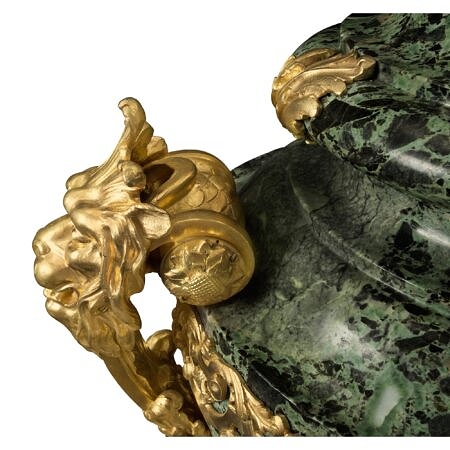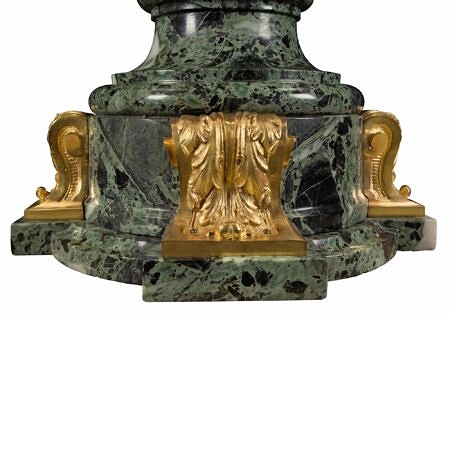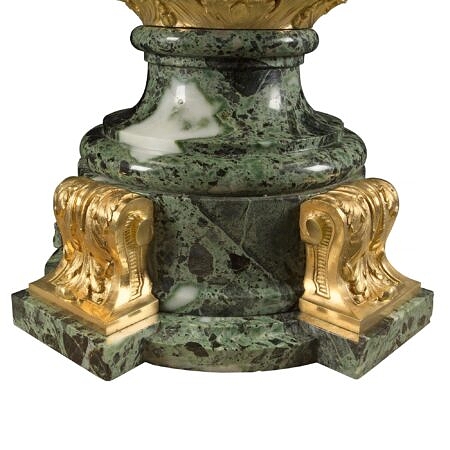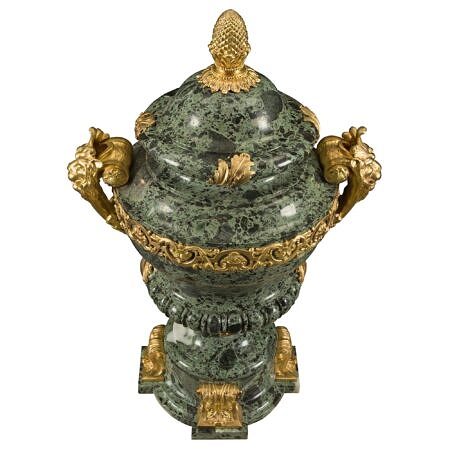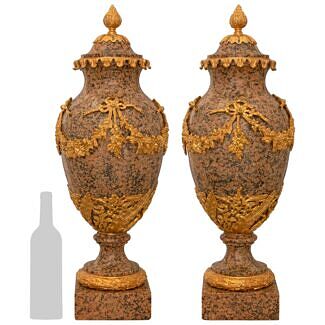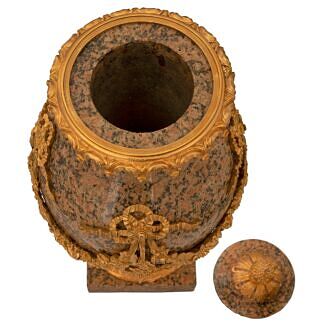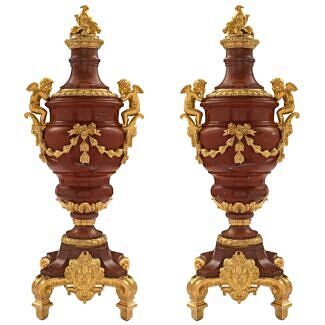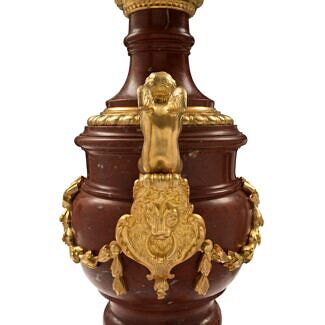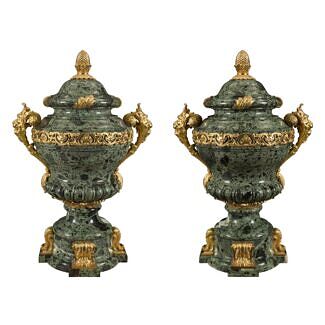A pair of French 19th century Louis XVI st. Belle Époque period urns, attributed to Henri Dasson
An extremely high quality and large scale pair of French 19th century Louis XVI st. Belle Époque period Vert Antique and ormolu urns, attributed to Henri Dasson. Each impressive urn is raised by a mottled base with protruding sides accented... — Read More
An extremely high quality and large scale pair of French 19th century Louis XVI st. Belle Époque period Vert Antique and ormolu urns, attributed to Henri Dasson. Each impressive urn is raised by a mottled base with protruding sides accented by fine scrolled and etched ormolu mounts. Above the socle pedestal is the elegantly shaped body that has a striking sculpted reeded design. Leading up each side are powerfully scrolled ormolu handles with acanthus leaves and richly chased lion heads. At the center is a pierced foliate and palmette designed ormolu band. The beautiful mottled lid displays fine foliate movements and an outstanding ormolu acorn final. Wonderful satin and burnished finish throughout. — Read Less
- Item # 9729
-
H: 32.25 in L: 21.5 in D: 15.75 in
H: 82 cm L: 55 cm D: 40 cm
- France
- 19th Century
- Marble/Stone, Ormolu
-
Belle Époque Period Read More,
Louis XVI st. Read More
(Belle Époque Period) -
Gaining its name from the optimistic and peaceful period of time between 1871 and World War I, Belle Epoque means “beautiful period”, and occurred during the era of the Third French Republic. This period of economic, colonial, and scientific prosperity brought with it a flourishing artistic climate with numerous literal, musical, theatrical, and visual masterpieces being created.
The Eiffel Tower, which was constructed between 1887 and 1889, served as the entrance to the World’s Fair held in Paris. That same year, the Moulin Rouge cabaret in Paris was founded and showcased the now more mainstream styles of performance including can-can dancing. Belle Epoque dancers and singers were Paris celebrities and became immortalized by the poster arts of Toulouse-Lautrec.
Leading up to this period in 1865, the American Civil War was coming to a close, with France proposing to construct the Statue of Liberty as a joint effort with the United States. France would be responsible for the statue, with America constructing the pedestal. Created to celebrate the nation’s success in building a viable democracy, the statue would stand as a symbol of friendship between the French and American people.
(Louis XVI st.) -
Also known as Louis Seize, Louis XVI's style is a style of architecture, furniture, decoration, and art created during Louis XVI’s 19-year reign in France, just before the French Revolution.
Thought to be a reaction and juxtaposition to the prior more elaborate styles, Louis XVI style developed at the end of the Baroque Period and continued until the birth of French Neoclassicism.
King Louis XVI showed little enthusiasm for the old world styles of the Baroque Period and he sought out a create a new “beau ideal” that focused on the purity and grandeur of Ancient Romans and Greeks.
Inspired by Ancient Roman architecture and art, distinct features of the Louis XVI style are linear lines, small repeated motifs, floral medallions hanging from ribbons, acanthus leaves, urns, dolphins, ram, and lion heads, and griffins.
Greco-Roman elements, often used in earlier and later French styles, were also quick common and included fluted and twisted columns, Caryathids, and corbels.
- Henry Dasson Read More
Henry Dasson (1825–1896) was a renowned 19th century Parisian maker of gilt-bronze mounted furniture. Unlike other cabinetmakers of the time Dasson began his career as a bronze sculptor, and consequently one characteristic of his work is the quality of his bronze and more precisely of the chasing. Dasson specialized in the production of Louis XIV, XV and XVI style furniture using the finest gilt-bronze mounts, and was recognized as a brilliant ‘ébéniste and bronzier’. He participated in the 1878 Paris Exposition Universelle and exhibited a number of pieces in the Louis XV and XVI styles, as well as pieces of his own modified 18th century designs. Including a table entirely in gilt-bronze, purchased by Lord Dudley. His copy of the celebrated ‘Bureau du Roi’ sold to Lady Ashburton. His works prompted critic Louis Gonse to comment: “newcomer Henri Dasson is rapidly rising to great heights through the perfection of his high quality creations, we warmly applaud him”
Dasson was made a Chevalier of the Légion d'honneur in 1883 and was awarded the Grand Prix Artistique at the 1889 Paris Exposition Universelle.
Payment Plan Option Learn More Choose the payment plan option at checkout and customize this payment option with our team. Payment plans are flexible and items will ship once all payments are received.


